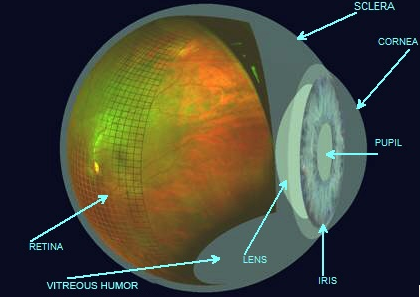Patient Advice: How Does the Human Eye Actually Work?
The human eye is a complex structure, yet very few people understand exactly how it works or how important it is to protect their eye health. In fact, there are a number of major components that form the eye, which all work together so we can see. The following list highlights the major components of the eye and the steps involved to create vision.
- — Cornea- As the outer layer of the eye, the cornea is responsible for most of your optical power. When light bounces off objects, it then enters the cornea. The cornea manipulates the light so that it goes into the pupil.
- — Iris- The iris is the colored portion of your eye responsible for adjusting the size of your pupil. Most people believe the pupil expands and contracts on its own; however, it’s the iris that actually opens and closes to dilate or contract the pupil.
- — Pupil- The pupil is the black circle in the center of your eye that is adjusted by the iris to regulate the amount of light sent through the lens.
- — Lens- Located behind the retina, the lens of your eye controls captured light and sends it to the back of your eye, or the retina.
- — Macula- The macula is the center portion of your retina and is made up of cone-shaped nerve cells that detect color, light, fine details and central vision.
- — Retina- Covering two-thirds of the back of your eye, the retina contains the macula at the center, while the remainder is made up of rod-shaped nerve cells that detect peripheral vision and motion. The macula and the retina’s nerve cells create electrical impulses, which contain the images.
- — Optical Nerve- The optical nerve is the communication line that transfers electrical impulses containing images to your brain, which processes them and creates sight.
Since your retina health is so critical for good vision, you should attend regular eye and vision exams utilizing Optos’ ultra-widefield retinal imaging technology. optomap eye exams provide retinal imaging technology that can result in early detection and treatment of retinal and systemic disease.
Image Source: optomap
